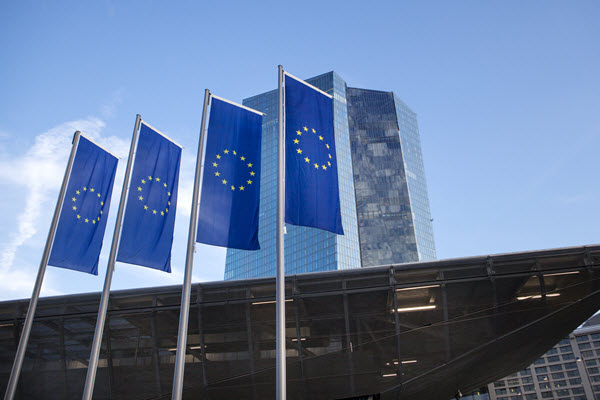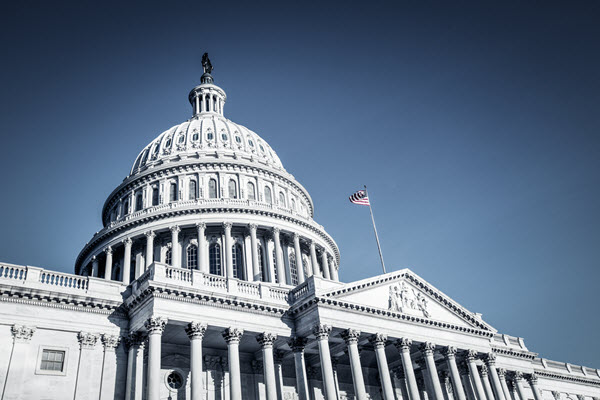News and currency moves: 3 events to watch in October
October 2021
Three newsworthy events in September have been keeping financial markets alert
- Trouble at China’s largest property developer
- Key meetings by central banks of major economies
- A political impasse over the raising of the debt limit in the US
While August was the slowest month for currency trading in more than a decade with record low volatility.1 Three key events during September herald a change of momentum, which means currencies could be about to diverge.

Evergrande
In September, fears of a popping stock market bubble reverberated around the investing world on news that one of China’s largest property developers, Evergrande, was struggling to pay its debts. And those debts are enormous, nearly $U300 billion, making it the most indebted developer in the world.2
The ramifications inside China are large enough — the company runs 1300 projects in 280 cities — and millions of Chinese citizens have paid for unbuilt off-the-plan projects.
But it also owes money to some of the world’s largest financial firms, like BlackRock, HSBC and UBS, sparking fears of the kind of contagion that resulted in the Global Financial Crisis.
Most observers believe China’s government won’t let the company collapse for fear of the knock-on effect on the country’s property industry, small investors, and local banks. Instead, it looks more likely that foreign institutions who lent money to Evergrande via the bond market will take the hit.3
China’s government stepped in to shore up liquidity in its local banking sector, staving off a potential ‘Lehman-moment’ – the banking collapse that was a catalyst for the global financial crisis. However, there are a number of currency factors to look out for;
- With equity markets already seen as overvalued, investors are on the lookout for any sign of bad news that would take the froth out of shares, and a potential collapse like Evergrande could send shockwaves through global markets. If that happens, commodity currencies such as the AUD, NZD and CAD could suffer and the US dollar may find support as a safe haven.
- China’s economy is very heavily weighted to real estate, with some estimating the sector accounts for nearly 30% of GDP4. A jolt to this critical sector would impact consumer confidence and economic growth, and negatively impact the RMB.
- It could put further downward pressure on the Australian dollar. China’s property sector accounts for 50% of its steel consumption. If Evergrande’s woes cause a slowdown in residential construction, that would reduce demand for iron ore, a key export that fuels AUD strength.

Central banks are diverging
There seem to be as many paths out of the pandemic as there are COVID-19 mutations and after nearly two years of central bankers singing from the same song sheet of ultra-low interest rates and lashings of stimulus, suddenly the central bank chorus is a little less tuneful.
With lockdowns ending, spending is growing fast and supply chains are struggling to keep up, meaning inflation is becoming a core concern. A raft of announcements on interest rate policy came through in September, with a clear split emerging between the hawks (those in favour of increasing rates) and the doves (those who want to keep monetary policy accommodative).
Hawks
- The Bank of Canada was one of the first central banks to talk about interest rate hikes back in April 2021, however has since turned more cautious in tone, maintaining its bond-buying program and deferring any rate hikes
- The US Federal Reserve hinted it will end its massive bond-buying stimulus program in November, although it won’t change official interest rates
- The Bank of England flagged for the first time that it may raise rates this year
- Norway became the first developed country to raise interest rates
- Brazil, Mexico, Hungary and Pakistan all raised rates
- New Zealand and South Africa are also likely to raise rates over the next few months
Doves
- Some central banks still worry that the pandemic’s impact is still too great to risk strangling economic recovery.
- China has increased stimulus to the system to ensure the banking sector is well funded in the event of an Evergrande collapse
- The Bank of Japan has given no indication it will end its stimulus
- The EU said it would continue its stimulus program for ‘as long as necessary’
- The Reserve Bank of Australia won’t review its bond buying until February next year, and has kept interest rates on hold
Rising interest rates generally coincide with rising currency, as investors move funds to where comparative returns are highest, and already US Treasury yields have jumped sharply since the Fed’s announcement.
OFX Global Treasury Manager Sebastian Schinkel said cracks are appearing between countries’ policies’ as we head towards the end of the year.
“Central banks in emerging markets are starting to react with Mexico and Colombia hiking rates, citing global inflation and production bottlenecks. Developed markets on the other side seem willing to keep the “inflation is transitory” narrative in place, probably hoping for a weaker currency to support growth, which seems vulnerable despite the massive amount of stimulus.”

US debt ceiling
A critical bill to raise the US debt cap and fund spending was rejected by Senate Republicans in the last week of September, moving the nation closer to a fiscal crisis.
The US is entering a dangerous period of political brinkmanship that threatens to derail the recovery as Republicans look to score political points against the Biden presidency heading into mid-term elections.
The bill was required to keep the government funded beyond the beginning of the new fiscal year on October 1, and would raise the borrowing limit through to the end of next year. The Bipartisan Policy Center says that if not passed the US government will not be able to meet its financial commitments as early as October 15,5 halting most government agency activities and services (like pension payments) and requiring all non-essential government personnel to take unpaid leave. That would be a devastating blow for an economy which is still suffering from high daily case counts and deaths from COVID-19. Economists and business leaders alike are saying the country cannot afford the uncertainty right now,6 with Oxford Economics predicting a shutdown would cost the economy $US6 billion a week.
US Treasury Secretary Janet Yellen told Congress on Tuesday that there would be “catastrophic” consequences if the lawmakers failed to raise the debt limit, including a self-inflicted US recession and a financial crisis. The US dollar’s status as the world’s reserve currency would be jeopardised, she also said.7
Eventually the House and Senate passed a temporary measure that funds the government until December 38 but that’s no guarantee that there won’t be more turmoil later in the year.
“The debt ceiling drama is currently adding to the overall risk-off sentiment, but a US default would be catastrophic for current over leveraged markets, which are priced for perfection,” says OFX’s Schinkel. “The USD is currently supported by rate differentials and haven demand, but a default will definitely challenge the safe haven status of the dollar.”
Biden’s ambitious agenda, which included $US3.5 trillion in spending on green infrastructure and an expanded social safety net — more stimulus that would have charged US GDP growth — is also looking shaky, with Biden’s own party now divided over the size of the bill. The consensus of the early months coming out of pandemic is now fracturing and markets are very suddenly awake after a relatively relaxed Northern Hemisphere late summer. Winter could be coming.
1https://www.ft.com/content/098c9fdc-c3bb-4f6d-b1ef-2ab424fa1c5f
2https://www.cnbc.com/2021/09/17/china-developer-evergrande-debt-crisis-bond-default-and-investor-risks.html
3https://www.nytimes.com/article/evergrande-debt-crisis.html
4https://voxeu.org/article/can-china-s-outsized-real-estate-sector-amplify-delta-induced-slowdown
5https://bipartisanpolicy.org/press-release/bpc-debt-limit-x-date-range-october15-november4/
6https://www.nytimes.com/2021/09/26/business/economy/america-debt-limit-political-game.html
7https://www.smh.com.au/business/markets/sharemarkets-are-wobbling-as-risks-grow-for-investors-20210929-p58vpi.html
8https://www.nytimes.com/2021/09/30/us/politics/infrastructure-democrats-pelosi.html
Download the OFX Currency Outlook
Learn more in the latest edition of the OFX Currency Outlook. It’s been produced to help you navigate market movements today, and to understand what to watch out for in the coming months.